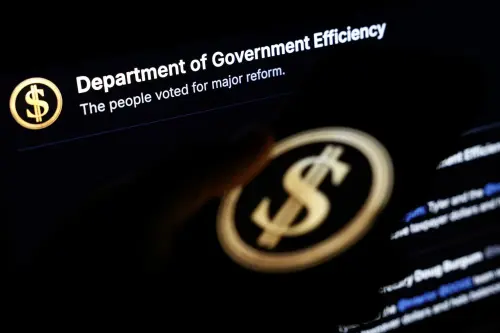In the modest guise of a book review, Ruy Teixeira has reopened an important issue in American politics: Who are the swing voters, and how important are they in these hyperpolarized times?
The answer matters a lot, both for campaign strategy and for the conduct of elected officials. If swing voters are insignificant, then campaigns and incumbents can focus on mobilization—that is, on whipping up the fervor of those who already support them. If swing voters make a difference, then the challenge is to balance mobilization and persuasion—doing enough to keep your supporters happy while giving persuadable voters good reasons to prefer you to the alternatives. If there aren’t many swing voters, which is what Teixeira suggests, the question of their significance is answered by default—with the upshot that the only types of elections the American people deserve are hyperpolarized ones. Fortunately, there’s good reason to believe otherwise.
Teixeira’s argument rests on the contention that independents are too often mistaken for swing voters. Citing a stack of solid political science studies, he pours cold water on the popular thesis that independents are a horde of untethered voters ripe for mobilization by the clarion call of moderation and compromise. Most independents “lean” toward one party or the other, and the leaners behave much like the partisans of the party toward which they incline. True (non-leaning) independents constitute only one-fifth of total independents, and less than one-tenth of the electorate. (In a close election, of course, even a relatively small group can be decisive if its members give a super-majority to one party.)
Still, there are some aspects of independents’ decision-making and weight that these aggregate statistics don’t quite capture. Consider the stark difference between two recent off-year elections—2006 and 2010. In 2006, 93 percent of Democrats voted for Democratic candidates, and 91 percent of Republicans for Republicans, while independents favored Democratic candidates 57 to 39. In 2010, as in 2006, overwhelming majorities of partisans went with their partisanship—91 percent for Democrats, 94 percent for Republicans. But this time, 56 percent of independents voted for Republican candidates (up 17 points from 2006) while only 37 percent favored Democrats (down 20 points). To be sure, independents’ share of the electorate rose from 26 percent in 2006 to 29 percent in 2010. But even if every additional independent voter had gone Republican, that wouldn’t be nearly enough to explain the dramatic shift. At least when it came to these congressional races, independents were a lot swingier.
In addition, Teixeira doesn’t explore in any detail those swing voters who don’t consider themselves independents at all. The Swing Voter in American Politics, the anthology of essays to which Teixeira refers in passing, suggests that there are quite a few. One political scientist—William Mayer—finds that swing voters averaged 23 percent of the electorate between 1972 and 2004, with considerable variation from year to year. Using a somewhat different methodology and metric, another political scientist—James Campbell—found about 17 percent. Because pure (swing) independents are only about 7 percent of the electorate, these results suggest that more swing voters are partisans than independents. (All other things being equal, however, independents are more likely than partisans to be swing voters.)
On their face, these findings also suggest that national campaigns can rarely afford to ignore swing voters. While there are some years (2004, for example) when they are less numerous, not speaking directly to a group that averages one-fifth of the electorate is hardly a formula for optimal results.
It turns out that the attitudes of swing voters are more distinctive than their demographics. Compared to non-swing voters, swing voters report being more moderate and less politically engaged. And they tend to be in the middle range on information—better informed than non-voters, less informed than voters who have made up their minds. But—and this is crucial—they have a solid enough base of information to understand, and be influenced by, additional information they receive during campaigns. And they are much easier to reach than non-voters.
The bottom line: While Teixeira rightly debunks the myth of free-range independents, it would be wrong to conclude that the politics of mobilizing core supporters is all that matters. Even in these hyperpolarized times, there are lots of voters who remain open to a politics of persuasion—more than enough to determine the outcome—and campaigns ignore them at their peril.
The Brookings Institution is committed to quality, independence, and impact.
We are supported by a diverse array of funders. In line with our values and policies, each Brookings publication represents the sole views of its author(s).



Commentary
Op-edIgnore Swing Voters at Your Peril!
March 12, 2012